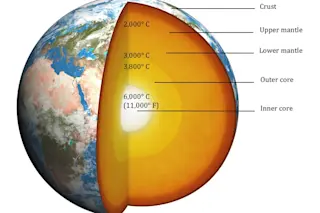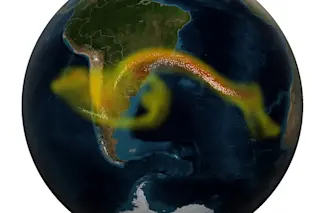By duplicating the extreme heat and pressure at the Earth’s core, a European research team has determined that the temperature of the center of our planet is close to 11,000 degrees Fahrenheit — nearly 2,000 degrees hotter than previously thought.
Earth’s solid inner core is surrounded by a fluid outer core, with the boundary between the two expected to be the temperature of the melting point of highly pressurized iron — the primary ingredient of both layers. Researchers placed a speck of iron between two small conical diamonds and applied laser-beam heat and 200 gigapascals of pressure. As the iron changed from solid to molten, they measured the temperature by noting a change in how X-rays were diffracted — a faster, more precise method than the simple visual techniques used in older experiments.
Knowing Earth’s core temperature is key to understanding the planet’s internal processes, particularly its magnetic field and ...














